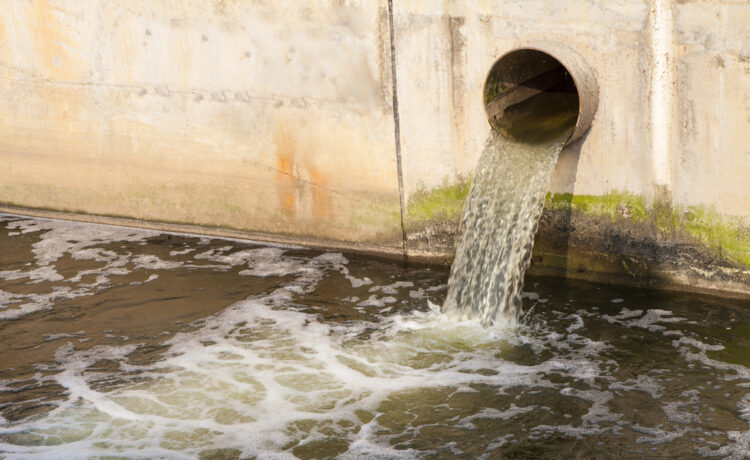Timeline of Contamination and Discovery
The saga of water contamination at Camp Lejeune spans several decades, marked by critical events that have shaped the ongoing legal and health-related battles. The discovery process has been arduous, with significant milestones including:
- The initiation of depositions for Track 1 discovery pool plaintiffs, with the majority of plaintiff depositions scheduled and underway, indicating a move towards greater transparency and accountability.
- A pivotal court ruling on March 14, 2024, which compelled the government to produce Water Modeling Project Files. These files, created by the Agency for Toxic Substances and Disease Registry (ATSDR), contain crucial information such as surveys of water systems and GIS maps pertinent to the contamination.
These developments are part of a broader narrative of discovery and response to the toxic exposure at Camp Lejeune. As the legal proceedings advance, the production and examination of evidence remain central to understanding the full scope of the contamination and its impacts on the health of military personnel and their families.
Chemicals Involved: TCE and PCE
Trichloroethylene (TCE) and perchloroethylene (PCE) are the primary contaminants identified in the Camp Lejeune water crisis. These chemicals have been used extensively in various industries and military applications. TCE, in particular, has been utilized for tasks such as paint removal, typewriter correction, engine cleaning, and even as an anesthetic in medical settings. Its widespread use has led to contamination at numerous sites, including Camp Lejeune and several locations in California’s Silicon Valley.
The risks associated with TCE and PCE are significant, as both chemicals have been linked to serious health issues. TCE is known to cause cancer, increase the risk of miscarriages and congenital heart disease, and has been associated with a markedly higher risk of Parkinson’s disease. PCE, commonly used in dry cleaning, also poses a threat to human health. The volatile nature of these substances means they can evaporate and infiltrate indoor environments, leading to toxic exposure even in homes, schools, and workplaces.
Despite the known dangers, TCE continues to be used in the United States, with the EPA only recently acknowledging its “unreasonable risk to human health.” The call for a nationwide ban on TCE and similar chemicals has grown louder, especially as some states have already taken steps to prohibit its use. The federal government, however, has yet to enact a comprehensive ban.
Regulatory Failures and Oversight
The water contamination at Camp Lejeune Marine Corps Base in North Carolina represents a significant regulatory failure, with oversight mechanisms failing to detect or address the presence of toxic chemicals over a span of several decades. From 1953 to 1987, the water supply systems were tainted with hazardous substances, exposing nearly 1 million people to potential harm.
Key points of regulatory oversight failure include:
- Inadequate monitoring of water quality and environmental safety standards.
- Failure to respond promptly to evidence of contamination.
- Lack of transparency and communication with the base residents and the public.
- Insufficient enforcement of environmental regulations and safety protocols.
These systemic failures contributed to the prolonged exposure of service members, their families, and civilian workers to dangerous chemicals. The aftermath has led to a complex legal landscape, with affected individuals seeking justice and compensation through various legal options and VA benefits.
Health Consequences of Toxic Exposure
Cancer Risks Linked to Contaminated Water
The water contamination at Camp Lejeune has been conclusively linked to an increased risk of various cancers. A study by the Centers for Disease Control and Prevention (CDC) indicates that military personnel stationed at the base between 1975 and 1985 were at least 20% more likely to develop certain types of leukemia, lymphoma, and cancers of the lung, breast, throat, esophagus, and thyroid.
Further research has highlighted the dangers of specific chemicals found in the water, such as TCE, PFOA, and PFOS. These substances have been associated with kidney cancer, testicular cancer, and other serious health conditions. The presence of these chemicals at Camp Lejeune and other contaminated sites across the United States underscores the widespread nature of this issue.
For those affected by the toxic exposure at Camp Lejeune, the path to justice includes the possibility of seeking compensation. Survivors can file claims for illnesses caused by the water contamination, with eligibility requirements including proof of exposure and a direct link between the illness and the toxins present. Legal assistance is available to navigate the complexities of filing claims under the Camp Lejeune Justice Act (CJLA).
Birth Defects and Other Long-Term Health Issues
The water contamination at Camp Lejeune has been linked to a range of severe and long-term health issues, particularly among children born to those exposed. Birth defects, a heartbreaking consequence, are just the beginning of a lifelong journey of medical challenges and care. Families face the daunting task of addressing complex health conditions that may include:
- Neurological deficits
- Difficulty eating
- Hormonal imbalances
These conditions often necessitate ongoing medical attention, including surgeries, hospital stays, and specialized medication, leading to substantial economic damages. The ripple effect extends beyond the immediate medical bills, impacting the family’s ability to work and earn. Parents may find themselves in the difficult position of having to reduce work hours or leave their jobs entirely to become full-time caretakers.
The mental health of the family unit also suffers, as the stress and anxiety of managing these health issues can be overwhelming. The pursuit of legal compensation often includes non-economic damages for the emotional and psychological toll on the family, highlighting the need for comprehensive support and advocacy for those affected.
Studies on TCE, PCE, and Associated Illnesses
Recent studies have highlighted the pervasive nature of trichloroethylene (TCE), a contaminant found in numerous locations, including Camp Lejeune, toxic Superfund sites, and potentially up to one-third of groundwater sources in the United States. The substance has been associated with a range of serious health issues:
- Cancer
- Miscarriages
- Congenital heart disease
- Parkinson’s disease, with a reported 500% increased risk
The connection between TCE exposure and illnesses such as Parkinson’s disease is particularly alarming. Research indicates that individuals directly exposed to TCE are at a heightened risk of developing the disease. However, the challenge lies in the latency period; symptoms of Parkinson’s often manifest years after exposure, complicating efforts to establish a direct causal relationship.
Advocacy for more comprehensive research is growing, emphasizing the need to understand TCE’s role in the development of Parkinson’s and other ailments. Monitoring levels of TCE in various environments is crucial, and there is a call for the dissemination of this information to those residing in affected areas. The stories of seven individuals, as reported in a recent article, underscore the personal struggles and the broader implications of proving the harmful effects of chemicals like TCE.
Economic Burden on Affected Families
Medical Costs and Long-Term Care
The economic repercussions of the Camp Lejeune water contamination have been profound for the affected families, particularly in terms of medical costs and long-term care. Many veterans and their families have faced staggering healthcare expenses, often exacerbated by the need for specialized treatments and ongoing care for conditions linked to toxic exposure.
- The cost of diagnostic imaging and surgeries can quickly escalate into tens of thousands of dollars, placing a significant financial strain on individuals and households.
- Cancer treatments, which are frequently required by those exposed to the contaminated water, can be particularly costly, with some families incurring expenses that can deplete savings and assets.
Despite the availability of VA healthcare, which can mitigate some expenses, veterans often encounter challenges such as long wait times for appointments and treatments. Additionally, the tiered system of co-pays based on income levels can still result in substantial out-of-pocket costs for many. The struggle to obtain confirmation and treatment for conditions presumed to be service-related adds to the financial and emotional toll on these families.
Impact on Employment and Earnings
The economic repercussions of the Camp Lejeune water contamination extend far beyond immediate medical expenses. Affected individuals and their families often face significant challenges in their employment and ability to earn a living. The necessity to care for ailing family members can lead to a reduction in working hours or even force individuals to leave their jobs entirely. This loss of income, coupled with the ongoing need for specialized medical care, can place a heavy financial strain on households.
- Lost Wages: Many victims of the contamination have experienced a loss of income due to illness-related work absences or the need to attend frequent medical appointments.
- Missed Promotions: Career advancement opportunities may have been missed as a result of prolonged absences or the inability to fulfill job requirements due to health issues.
- Career Changes: Some individuals have had to change careers or accept lower-paying jobs that are more accommodating to their health limitations or caregiving responsibilities.
The long-term impact on employment and earnings can be devastating, with some families struggling to maintain financial stability years after the initial exposure. The fight for fair compensation in such cases is not only about addressing immediate needs but also about securing the financial future of those who have suffered due to this environmental disaster.
Legal Expenses and the Fight for Compensation
The pursuit of justice for the victims of Camp Lejeune’s water contamination has been a complex and costly endeavor. Legal representation has become a critical component in the fight for compensation, with many families seeking the expertise of personal injury attorneys to navigate the intricate legal landscape. These legal battles often involve:
- A thorough assessment of the damages suffered by the victims.
- Collection and analysis of medical records and other evidence.
- Negotiations with defendants and insurance companies.
- Litigation, if a fair settlement cannot be reached.
Hiring a reputable attorney can significantly influence the outcome of a case. It signals to the defendant’s legal team that the victims are serious about obtaining a settlement that truly reflects their losses. However, this comes with substantial legal fees, which can be a burden for families already struggling with the financial impact of medical costs and lost earnings. Some law firms offer contingency fee agreements, where payment is only required if compensation is secured, alleviating some of the immediate financial pressure. Despite the costs, for many, the legal fight is a necessary step towards achieving justice and financial relief.
Legal Landscape and Compensation Efforts
Camp Lejeune Lawsuit Overview
The Camp Lejeune water contamination issue has given rise to a significant number of lawsuits, reflecting the gravity of the situation and the breadth of its impact. As of March 2024, the Fob James Law Firm reports representation of veterans and their families across 48 states, indicating the national scope of the litigation. The lawsuits are centralized in the federal court of North Carolina, where all claims must be filed and litigated, regardless of the plaintiff’s state of residence.
Key developments in the legal proceedings include:
- Over 1,471 lawsuits have been filed, alongside 147,428 administrative claims with the Judge Advocate General (JAG).
- Plaintiffs are actively seeking documents from the Agency for Toxic Substances and Disease Registry (ATSDR) and have motioned the court to compel their production.
- The Department of Justice (DOJ) has requested that plaintiffs disclose sensitive information such as social security numbers and dates of birth.
The Camp Lejeune Justice Act (CLJA) initially provided a six-month window for the Navy to address the claims before allowing civil suits to proceed. However, not a single claim was resolved by the JAG within this period, leading to a surge of lawsuits filed in the Eastern District of North Carolina. The influx of new cases is expected to grow into the thousands, signaling a protracted and complex legal battle ahead for those seeking justice.
Settlement Amounts and Payout Qualifications
The settlement process for the Camp Lejeune water contamination cases has been characterized by stringent criteria, resulting in a limited number of cases qualifying for settlement. As of September 2023, out of approximately 175,000 claims, only a small fraction have been settled by the Navy’s Tort Branch and the Department of Justice (DOJ), highlighting the challenges faced by claimants seeking compensation.
The Elective Option (EO) is a fast-track settlement route designed for a select group of qualifying claimants. To date, the government has made a modest number of settlement offers through the EO, with only a handful being accepted. The DOJ has indicated the possibility of extending additional EO offers in the near future. However, it is important to note that attorney fees for EO settlements are capped, which may influence the decision-making process for claimants and their legal representation.
For those interested in the specific settlement amounts, the government has provided a detailed list in their Guidance Document. Claimants and their attorneys are encouraged to review this document carefully to understand the potential settlement figures and the qualifications required to be eligible for these amounts.
The Role of Lawyers in Navigating Claims
The involvement of lawyers in the process of navigating claims for those affected by the Camp Lejeune water contamination is critical. Legal representation can significantly influence the outcome of a claim, as attorneys bring expertise in product liability and personal injury law that is essential for effectively advocating on behalf of the plaintiffs.
- Expertise in Settlement Negotiations: Lawyers are instrumental in ensuring that plaintiffs do not settle for less than they deserve. With their knowledge of legal procedures and negotiation tactics, they can secure more favorable settlements.
- Advocacy Against Large Entities: Facing large corporations and their insurers can be daunting. A lawyer acts as a formidable advocate, leveling the playing field and ensuring that the claim is taken seriously.
- Resourceful Case Building: A well-resourced attorney will gather evidence, handle procedural complexities, and present a compelling case, which is vital for a successful outcome.
It is evident that hiring a reputable attorney not only enhances the chances of a fair settlement but also sends a strong message to the opposing legal teams about the seriousness of the claim. For many, the decision to engage a lawyer could be the defining factor in the journey towards adequate compensation.
Governmental Response and Accountability
Legislative Actions and Relief Measures
In response to the Camp Lejeune water contamination crisis, legislative efforts have been made to provide relief and compensation to those affected. The PACT Act, which includes provisions for Camp Lejeune victims, has been a focal point of these efforts. The U.S. House of Representatives passed the PACT Act with overwhelming support, signaling a strong bipartisan commitment to addressing the needs of veterans and their families exposed to toxic water.
Despite initial progress, the legislative journey has faced setbacks. The Senate, after previously passing a similar bill with substantial support, encountered a roadblock when the GOP wing blocked the PACT Act due to a minor amendment. This unexpected turn of events delayed the bill’s enactment, with expectations for its passage pushed to late fall after the Senate’s recess.
The implications of these legislative actions are significant for the Camp Lejeune community:
- Expanded healthcare and compensation for those with water contamination claims.
- Potential for increased strain on resources, as noted by concerned citizens, due to the influx of new claims.
- A stay on lawsuits related to the contamination, indicating a pause in legal proceedings while legislative solutions are sought.
Agency for Toxic Substances and Disease Registry (ATSDR) Studies
The Agency for Toxic Substances and Disease Registry (ATSDR) has played a pivotal role in assessing the health impacts of the Camp Lejeune water contamination. As a federal public health agency, ATSDR is tasked with protecting communities from the adverse health effects of exposure to hazardous substances.
Key activities of the ATSDR in response to the Camp Lejeune situation include:
- Responding to environmental health emergencies.
- Investigating emerging environmental health threats.
- Conducting research on the health impacts of hazardous waste sites.
- Building capabilities of state and local health departments.
The agency’s efforts have been instrumental in providing the scientific foundation for understanding the long-term health consequences faced by those exposed to the contaminated water at Camp Lejeune. Through comprehensive studies and community engagement, ATSDR has contributed to the body of knowledge that informs public health actions and policy decisions.
Military and VA Healthcare Support Initiatives
In response to the Camp Lejeune water contamination crisis, the military and the Department of Veterans Affairs (VA) have implemented healthcare support initiatives to assist affected veterans and their families. These initiatives aim to provide comprehensive healthcare services and support for those exposed to the toxic substances at Camp Lejeune.
Eligible veterans are encouraged to utilize the resources made available through the PACT Act, which has significantly expanded healthcare eligibility for veterans exposed to toxins. Since the enactment of the PACT Act, over half a million veterans have enrolled in VA healthcare, indicating a robust response to the legislation.
Key aspects of the support provided include:
- Enrollment in VA healthcare with lifetime access for eligible veterans.
- A dedicated PACT Act website and contact number (1-800-MYVA411) for veterans to learn more and apply for healthcare services.
- Outreach efforts to ensure veterans are aware of the healthcare they deserve and how to access it.
The VA’s commitment to veterans is evident in their call to action, urging those who served and were exposed to hazardous conditions to seek the healthcare benefits they have earned. This initiative represents a critical step in addressing the long-term health needs of those impacted by the contamination at Camp Lejeune.
Community and Environmental Impact
Stigma and Property Values in the Surrounding Areas
The water contamination issues at Camp Lejeune have had a profound impact on the surrounding communities, particularly in terms of property values and the associated stigma. Residents and potential buyers often express concern about the long-term effects of the contamination, leading to a hesitancy to invest in the area. This has resulted in a tangible decrease in property values, as the demand for housing in potentially affected areas has waned.
The stigma attached to the contamination extends beyond property values. It influences the overall economic development of the region, as seen in Bertie County’s efforts to attract new residents and improve local revenue through housing initiatives. The introduction of a new housing complex, as highlighted by Superintendent Otis Smallwood, is expected to bolster economic activity by increasing tax revenue and consumer spending in local businesses.
However, the area’s reputation for a lack of housing options has historically led to challenges such as poor teacher retention, with educators commuting over an hour due to the absence of local accommodations. The new housing complex aims to address these issues, potentially improving retention and stabilizing the local workforce. The success of such initiatives is critical for reversing the negative perceptions and fostering a more vibrant community.
Ongoing Environmental Remediation Efforts
The aftermath of the Camp Lejeune water contamination has necessitated extensive environmental remediation efforts. These efforts are critical to restoring the safety of the area and preventing future health risks. The Environmental Protection Agency (EPA) has been at the forefront of these initiatives, working closely with local communities to ensure that the remediation process is both effective and equitable.
Key actions taken include the implementation of vapor remediation systems, which are designed to reduce indoor air exposure to harmful chemicals such as TCE. This technology is similar to systems used for mitigating radon and is part of a broader strategy to address the thousands of contaminated sites across the United States. The urgency of these actions is underscored by the health implications for those exposed to the contaminants.
In addition to technological solutions, the EPA has engaged in legal actions to enforce environmental regulations. Settlements have been reached with entities responsible for illegal importation of pollutants, and orders have been issued to improve waste treatment facilities. These legal measures complement the physical cleanup efforts and aim to hold polluters accountable while safeguarding public health.
Public Perception and Trust in Military Installations
The revelations of water contamination at military bases such as Camp Lejeune have significantly impacted public perception and trust in military installations. Concerns have been amplified by reports from organizations like the Environmental Working Group, which suggest that the Department of Defense may be underreporting the true scale of affected individuals. This has led to a growing skepticism about the transparency and accountability of military authorities in environmental matters.
The issue extends beyond Camp Lejeune, with other bases like Ft. McClellan in Alabama and the Bomarc 46th ADMS site in New Jersey also coming under scrutiny for historical contamination events. These instances have contributed to a broader narrative of distrust, as veterans and the public alike question the safety of military environments.
The economic and health ramifications of such contamination events have only served to deepen the mistrust. With reports of exposure to toxins leading to serious health conditions, including cancer and Parkinson’s disease, there is an increasing demand for comprehensive governmental response and support for affected individuals. The following points highlight the key concerns:
- Inadequate reporting and assessment of the full impact of contamination.
- Historical oversight and regulatory failures at multiple military installations.
- The need for transparent communication and robust health monitoring for current and former military personnel.
Restoring trust will require concerted efforts to address these issues, ensuring that the health and safety of service members, their families, and surrounding communities are prioritized.
Advocacy and Support for Victims
Non-Profit Organizations and Support Groups
In the wake of the Camp Lejeune water contamination crisis, a network of non-profit organizations and support groups has emerged to provide assistance and advocacy for those affected. These entities offer a range of services, from helping veterans navigate the complexities of medical care and compensation claims to providing emotional support and community for families grappling with the long-term health consequences.
Key initiatives by these groups include:
- Fundraising efforts to support medical treatments and research.
- Educational programs to inform the public and policymakers about the issues surrounding toxic exposure.
- Legal aid to assist with filing claims and obtaining justice for victims.
The collaboration between these organizations and the affected individuals has been instrumental in bringing attention to the Camp Lejeune tragedy and in pushing for legislative and policy changes. Their continued advocacy plays a crucial role in ensuring that the voices of the victims are heard and that similar incidents are prevented in the future.
Educational Resources and Awareness Campaigns
In the wake of the Camp Lejeune water contamination crisis, a robust array of educational resources and awareness campaigns have been developed to inform affected individuals and the broader public. These initiatives aim to enhance understanding of the health risks associated with toxic exposure and to promote community involvement in advocacy and remediation efforts.
Key resources include:
- Health Registries to track and study the impact of exposure
- Risk Communication tools to disseminate vital information
- Community Involvement programs to encourage active participation in addressing the contamination
Additionally, multimedia tools and social media platforms have played a significant role in spreading awareness. The ATSDR’s Community Engagement Playbook and the National ALS Registry are examples of how agencies are reaching out to provide crucial information and support. Educational efforts also extend to medical providers through training programs that focus on environmental health, ensuring that healthcare professionals are equipped to respond to the needs of those affected by toxic substances like those found at Camp Lejeune.
Survivor Stories and the Human Element
The personal narratives of those affected by the Camp Lejeune water contamination bring a deeply human perspective to the tragedy. These stories are not just accounts of suffering; they are powerful testaments to resilience and the relentless pursuit of justice. Survivors and their families have shared their experiences, often recounting the physical and emotional toll of their injuries and the long battle for recognition and compensation.
- Many recount the empathy and expertise demonstrated by legal teams, which have been instrumental in guiding their strategies through complex litigation.
- The courage displayed by clients facing powerful corporations underscores the significant role of legal representation in achieving justice.
- Community voices, including those from tribal nations and environmental health volunteers, have been pivotal in collaborating with agencies like the Agency for Toxic Substances and Disease Registry (ATSDR).
These narratives serve not only as a record of the past but also as a beacon for future advocacy, ensuring that the lessons learned from Camp Lejeune resonate and bring about meaningful change.
Future Implications and Preventative Measures
Policy Changes and Improved Safety Protocols
In the wake of the Camp Lejeune water contamination crisis, significant policy changes and the implementation of improved safety protocols have become paramount to prevent future incidents. These measures are designed to ensure a higher standard of environmental safety and health protection for military personnel and their families.
Key policy changes include:
- The establishment of stricter environmental regulations for military installations to monitor and control potential contaminants.
- Enhanced communication protocols between military bases and health agencies, providing actionable guidance to state and local health partners.
- The development of comprehensive health surveillance programs to detect and address health issues arising from environmental exposures promptly.
Improved safety protocols involve:
- Regular and rigorous testing of water sources for harmful substances, with results made transparent to the base community.
- The creation of an interagency task force to oversee environmental health concerns and ensure compliance with new safety standards.
- Mandatory training for base personnel on the handling of hazardous materials and the importance of reporting potential environmental hazards.
Monitoring and Prevention of Future Contamination Events
In the wake of the Camp Lejeune water contamination crisis, proactive measures are being implemented to prevent future incidents. The U.S. Environmental Protection Agency (EPA) has rolled out an action plan targeting persistent environmental pollutants such as PFAS. This plan includes comprehensive strategies to monitor groundwater and establish stringent national drinking water standards.
Key steps in the monitoring and prevention process include:
- Expedited remediation of contaminated sites, with a focus on utilizing advanced vapor remediation systems.
- Phasing out PFAS-containing firefighting foams by the U.S. Department of Defense, alongside efforts to remediate PFAS contamination at military bases.
- Adoption of the Agency for Toxic Substances and Disease Registry’s (ATSDR) recommendations for environmental health education, aimed at medical providers, health assessors, and the public.
These initiatives are part of a broader commitment to safeguard public health and restore confidence in the safety of military installations and their surrounding environments.
Investment in Research and Public Health Initiatives
In the wake of the Camp Lejeune water contamination crisis, there has been a significant push to bolster investment in research and public health initiatives. These efforts aim to enhance the understanding of environmental health risks and to develop robust systems for preventing and responding to similar events in the future.
Key areas of focus include:
- Health Registries to track and analyze the impact of environmental exposures
- Emergency Response protocols to ensure swift action in the face of public health threats
- Comprehensive Health Assessments and Consultations to identify and mitigate health risks
- Effective Risk Communication strategies to inform and educate affected communities
- Rigorous Monitoring and Testing programs to detect contaminants early
- Active Community Involvement to ensure that public health measures are community-centered
- Development of Data Resources to support ongoing research and policy-making
These initiatives are supported by various agencies, including the Agency for Toxic Substances and Disease Registry (ATSDR), which provides actionable guidance to state and local health partners. The ATSDR’s involvement in incidents like the East Palestine train derailment and the Red Hill water contamination in Hawaii exemplifies the critical role of federal agencies in managing environmental health crises. Additionally, the Environmental Protection Agency (EPA) facilitates access to grants and resources, as seen in their webinars on grant applications and the distribution of funds through the Bipartisan Infrastructure Law. Such investments are crucial for building a resilient public health infrastructure that can protect communities from the adverse effects of environmental hazards.















